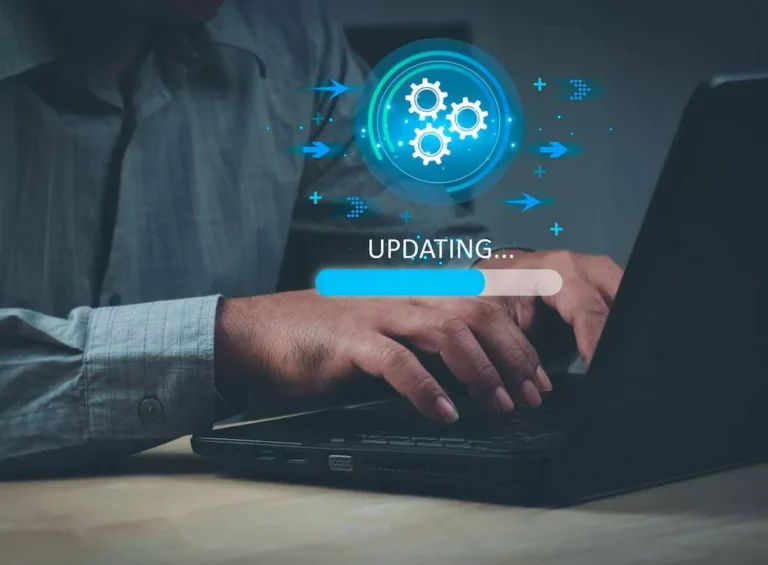Legacy Application Modernization: When Is the Right Time to Do It?

Today’s business landscape is evolving rapidly. Do you ever feel it’s hard to keep up? Outdated legacy applications can be the root of the problem. Obsolete technology and structures, defining these systems, often block your progress. It may impede a firm’s capacity to adapt to growing enterprise necessities. Moreover, it presents notable threats to safety and operations. Want to keep a competitive edge in today’s swift-paced corporate landscape? That’s why you need to upgrade your legacy apps. In the article, we’ll look into legacy application modernization and give some recommendations on doing it.
What is Legacy Application Modernization?
Revamping legacy systems implicates the transformation or upgrade of outdated, frequently clunky, and poor-performing systems. It helps them transform into more up-to-date, productive, and flexible solutions. If you want to succeed, craft a robust strategy for modernization. It’s an IT roadmap that leads you to adopt microservices and present improvement solutions. The aim is to establish a brand-new system boosting company workflows and enhancing the CX.
In a recent survey, over half of the participating ventures highlighted the primary motivators of modernizing their legacy applications and info in the last year. Increased cybersecurity and higher performance are the top drivers. They’re closely followed by the chance to lower costs and integrate technologies more efficiently. Nearly 50 percent of respondents acknowledged their significance. Regulatory compliance ranked lowest in popularity among the listed drivers. Still, it influenced the decisions of almost 20 percent of the surveyed companies.
Upgrading out-of-date apps frequently hinges on adopting microservices, a pivotal element. Microservices entail breaking large programs into many small and user-friendly components or services. To improve the ease of maintenance in software, you should also encapsulate data. Do so within clear boundaries.
Digital transformation aims to forge new business processes and CX and zero in on revamping current ones to align with growing industry and market needs. The method frequently involves the combination of digital tech with customer-centric strategies.

We are confident that we have what it takes to help you get your platform from the idea throughout design and development phases, all the way to successful deployment in a production environment!
Why is Legacy Application Modernization Important?
A recent report delved into the speedier digital makeover prompted by COVID-19. It revealed a significant shift in thinking. People are realizing how crucial modern technology has become. The main deal with sprucing up those old applications is to tackle all the issues tied to them. Whether it’s about money or making things better for clients and employees, people have changed perspectives.
Now, when we talk about modernization, we’re not talking about tossing out these applications altogether. It’s more about bringing them up to speed with what today demands. And why bother with all this? Well, modernizing the old enterprise applications keeps the company operations sharp and efficient. Let’s look at the primary perks of the strategy:
- Boost Performance and Efficiency: Improvement can elevate the performance and efficiency of legacy programs. The result? More instantaneous reaction times and an improved UX.
- Elevate Security and Compliance: Strengthening safety practices and guaranteeing alignment with industry benchmarks are crucial to mainframe modernization. These steps decrease the likelihood of safety breaches and help sidestep costly compliance problems.
- Enhance UI/UX: Upgrade often includes a makeover of UI/UX. Giving new life to your legacy apps pays off in revamped client and employee happiness.
If you decide to bring your legacy applications to the next level, your firm has a chance to extract fresh value from aging systems. The secret behind it is optimization with the latest capabilities and features. That way, you can turn non-functional apps into efficient components that align with contemporary solutions. Your older technology systems will remain compatible with the latest modern solutions.
Examples of Popular Legacy Technologies Leveraging Modernization
Businesses utilizing SAP have customized the fundamental application to align with their particular requirements. However, these adaptations can be expensive and present challenges when updates are needed for future needs. This is where the modernization of legacy applications comes into play, offering a solution to these challenges. Companies seized an opportunity to unlock new value by opting for low-code application development to modernize SAP’s legacy technology. Through this approach, they enhanced and refined the system with the latest capabilities, ensuring its competitiveness in the ever-evolving landscape.
Another example is .NET and Oracle. Developers construct enterprise systems with these technologies. They’re chosen because of their ability to provide the exact features needed, surpassing Commercial Off-The-Shelf (COTS) solutions. Yet, when it comes to later upgrades with new features and capabilities, these legacy systems can become a real headache in terms of complexity. Legacy application improvement emerges as a proven solution to the challenge. Many organizations have revamped and optimized their .NET and Oracle-built legacy tech with a low-code approach. It allows them to keep and upgrade the original technology with modern capabilities, offering a win-win solution.

Defining the Right Time for Modernizing Legacy Applications?
Specific indicators pinpoint the perfect moment for digital transformation. Entrepreneurs must recognize the signs that say their firms are prepared for legacy application modernization. Hence, the right time to embark on the journey is when:
- The legacy system fails to adapt to the company’s growing needs. Its scalability constraints hamper firm expansion.
- The old system’s performance hit a slowdown. Dealing with a patched-up architecture and relying on hard-coded passwords is nothing short of a headache.
- Security vulnerabilities emerge due to obsolete hardware or software. A lack of maintenance support is a result.
If any of these signs resonate with your current legacy technology situation, it’s time to move toward a refresh. We understand, legacy apps offer a sense of familiarity and comfort, so the transition to the up-to-date system may feel bewildering. Yet, when you face the risk signs outlined above, embrace modernization strategies and seek expert help. GlobalCloudTeam is here to help you revamp your worn-out systems and bring new life to the apps.
Potential Challenges and Solutions
Old systems improvement is a unique journey to each organization. Entrepreneurs face numerous obstacles. Let’s touch on the fundamental hurdles on your way:
Technical debt
Technical debt is a repercussion of preferring quick fixes over more comprehensive solutions. This compromise may yield short-term benefits but incurs long-term costs. But how do you tackle this challenge? The focus needs to be on reduction through the restructuring and refactoring of legacy code.
A DevOps methodology is another helper which streamlines the development cycle and fosters agility and agile responsiveness. GlobalCloudTeam can be your ally. Its DevOps solutions work to cut inefficiencies and amp up the quality and reliability of your software. The experts ensure efficient deployment through agile methodologies. It cuts down production time and minimizes associated risks.
Security
Security reinforcement stands as a pivotal aspect of modernization endeavors. It’s essential to embed safety practices right from the beginning. A thorough risk assessment during the upgrade helps spot possible threats. Outline safety requirements and cover information protection, encryption, and regulatory compliance. Adhere to regulations and guarantee ongoing compliance, and you’ll get sustained security.
Future-proofing
Practical modernization efforts hinge on robust planning. Think about making an all-encompassing guide. It should outline goals, methodologies, timelines, and necessary resources. Such a detailed plan establishes a clear trajectory. Furthermore, contemplate the development of APIs for system connectivity. Use frameworks to get streamlined development and integrate automation, AI, and cloud computing. It ensures applications stay dynamic and aligned with the evolving landscapes of business.
Tips for Modernizing Legacy Applications
There are various pitfalls in modernizing your business programs. To steer clear of them, follow this handy checklist:
- Identify the current limitations within the legacy applications or systems. Define the specific requirements against each constraint.
- Assess the advantages of modernizing the legacy programs. Outline your expectations from this approach.
- Establish clear goals and select an approach or strategy that aligns best with your desired end output.
- Pick the right tech stack to achieve the performance and UX you’re aiming for.
- Upgrade data storage and management systems to handle large volumes of data efficiently. Implement analytics tools to gain insights from data, aiding in decision-making and performance optimization.
If you’re still uncertain or hesitant, contact experts to get a professional consultation. GlobalCloudTeam has a track record of guiding organizations with the right advice. They help with choosing the best roadmap for revamping legacy applications. If you’re seeking direction for your existing legacy technology, the team is here to lend a helping hand.
Final Words
Upgrades to your legacy systems can give your firm a real power boost and prove helpful in the long run. Enhanced functionality of the IT infrastructure, boosted efficiency, and elevated the user experience — what can be better? It means your company can smoothly operate with technology that perfectly aligns with its current business needs.
Empower your employees with expert guidance and support from GlobalCloudTeam. There’s no need to add more complexity to your modernization efforts. The specialists assist your organization in overcoming IT challenges as you integrate new applications and digital processes.
Top Articles
Container vs VM (Virtual Machines): How Do They Differ?
I am here to help you!
Explore the possibility to hire a dedicated R&D team that helps your company to scale product development.






